30 October 2023
![]() 6 mins Read
6 mins Read
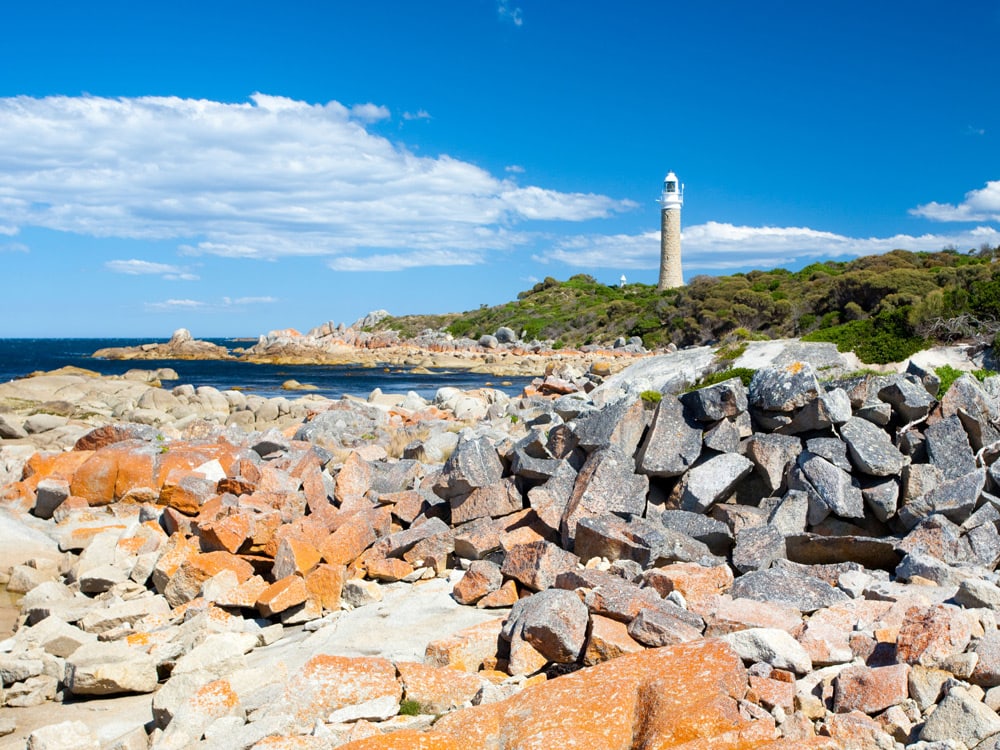
This is just one fascinating example of the Indigenous culture that is hidden in plain sight in a state where a pervasive myth throughout much of the 20th century did its best to erase it. Today, the word palawa refers to Tasmanian Aboriginal people as a whole, but encompasses the many different groups from all around Tasmania, or lutruwita, in the revived palawa kani language. Here are ways you can experience this culture through both a contemporary and historical lens today.
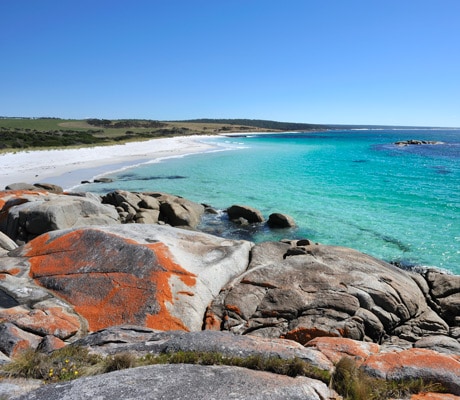
Larapuna/Bay of Fires.
The Wukalina Walk was a quiet revolution when it launched in early 2018 as Tasmania’s first Indigenous owned and operated tourism venture. A four-day walk in the state’s north-east, around the spectacular landscapes of the larapuna/Bay of Fires and wukalina/Mt William areas, it invites guests to reacquaint themselves with this land as the cultural homeland of the palawa.
Two nights of the trip are spent at the bespoke camp, krakani lumi, which means place of rest; these award-winning communal huts are directly influenced by traditional Aboriginal Tasmanian domed architecture.
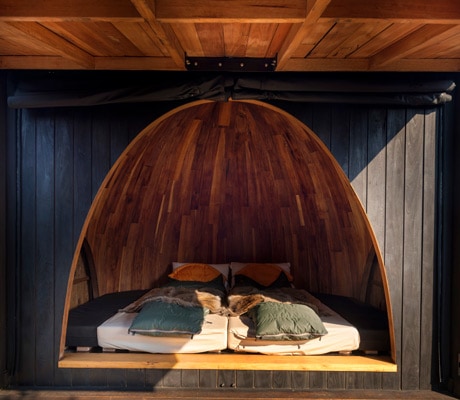
Krakani lumi.
Local and family-owned Kooparoona Niara Tours runs bespoke day trips through the Meander Valley near Launceston that combine visits to Aboriginal cultural sites and a view of contemporary Indigenous culture with a taste of the region’s standout produce – think truffles, salmon and wine.
Local outdoor educator and cultural adventure tour operator Ben Rea, of Tasmanian E-Bike Adventures, has paired with Sheldon Thomas, a Tasmanian Aboriginal healer, cultural and ceremonial guide to create one of the most unique Indigenous experiences you’ll find in Tasmania.
Their Nohoiner Adventure is a day-long Aboriginal on-Country adventure on the Forestier Peninsula in the state’s south-east – a remarkable historic place in the cultural story of Tasmania and Australia’s settlement history. Here, guests are immersed in cultural lore and healing ceremonies, are treated to a seasonal picnic of local bush foods, and visit the site of original contact and conflict between Tasmanian Aboriginal people and European explorers.

The Nohoiner Adventure.
“Sheldon and I co-created the Nohoiner Adventure to empower an authentic experience for guests to connect with the Tasmanian Aboriginal story through a cultural immersion that deepens guests’ understanding of Aboriginal perspectives in a wild Tasmanian natural setting,” says Rea. “It shines light on the spiritual healing knowledge and wisdom of our first people and their sacred connection to Country. Through conversation and story sharing framed with ceremony and ritual, guests gain insight and understanding that inspires personal growth and a deep appreciation of the cultural, historic and spiritual values of our island home, Tasmania.” Watch this space for further joint ventures.
The always-engaging Tasmanian Museum & Art Gallery (TMAG) is a good introduction to Tasmanian Aboriginal culture, heritage and current perspectives. As well as hosting
contemporary exhibitions such as Julie Gough’s Past Tense, part of Dark Mofo’s lineup last year, it has two permanent exhibitions dedicated to engaging visitors on all things palawa.
The newly refreshed ningina tunapri (‘to give knowledge and understanding’) presents 40,000 years of Tasmanian Aboriginal culture in a highly engaging way and Our land: parrawa, parrawa! Go away! is an affecting exhibition in the old Bond Store Galleries that tells the story of Aboriginal people and colonists following the invasion of lutruwita, focusing on the Black War.
Not far from TMAG, a stone’s throw from Hobart’s waterfront, ART MOB is a gallery that specialises in Tasmanian Aboriginal art with a number of rare pieces as well as prints and paintings by well-known Tasmanian Aboriginal artists.
Check into MACq 01 – on the traditional lands of the Mouhenneener people – for an immersive portal into Tasmania’s Indigenous history. This slickly designed hotel on Hobart’s waterfront is a storytelling hotel that brings together the tales of real-life characters who have played a role in Tasmania’s past, palawa inspirations among them, including resistance fighter and chieftain of the Plangermaireener people, Mannalargenna, and his granddaughter Dolly Dalrymple, who became a hero in her own right.
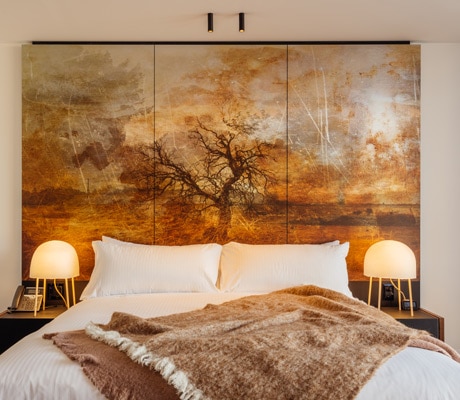
Check into the MACq 01.
“Our Indigenous stories are some of our most powerful,” says MACq 01’s storyteller Justin Johnstone, “and although tragedy is woven through their stories, the thing that keeps coming up and up in so many is a sense of grounded determination and resilience.” One hundred and fourteen tales are told throughout the rooms and suites, and spill out beyond. “When you walk in the front door of MACq 01, the first thing you see are the palawa artefacts and stories,” says Johnstone. “That’s as it should be. They’re our first stories.”
The Lounge in particular is an ode to the palawa: centred around a fire pit, the original storytelling nucleus, and cast in light that represents the kelp forests of the Derwent River. “The kelp was a significant resource for the palawa in the coastal regions,” explains Johnstone. “It could be worked like leather or shaped and hardened into carrying and storage vessels with an almost a Bakelite-like texture. The kelp also attracted aquatic life, providing many other sources of nutrition.”
Tasmania’s wilderness areas are living cultural landscapes that preserve the heritage of the palawa, who have lived in, used, managed and modified this landscape for more than 42,000 years.
The Takayna/Tarkine region of Tasmania’s north-west is a particularly interesting place that takes its name from the ancient culture of the Tarkiner people, who once occupied the coastal region near Sandy Cape.
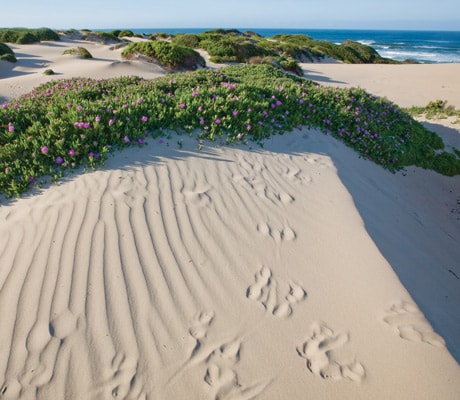
The Tarkine coast.
Today, the coastal area of this rainforest wilderness area is strewn with middens, hut sites and other artefacts that make this coastline one of the richest human archaeological zones on the planet. Follow the Tarkine Drive, packed with walking tracks, lookouts, cultural sites and picnic spots, or join a six-day walk of the Tarkine Coast with Tarkine Trails.
LEAVE YOUR COMMENT